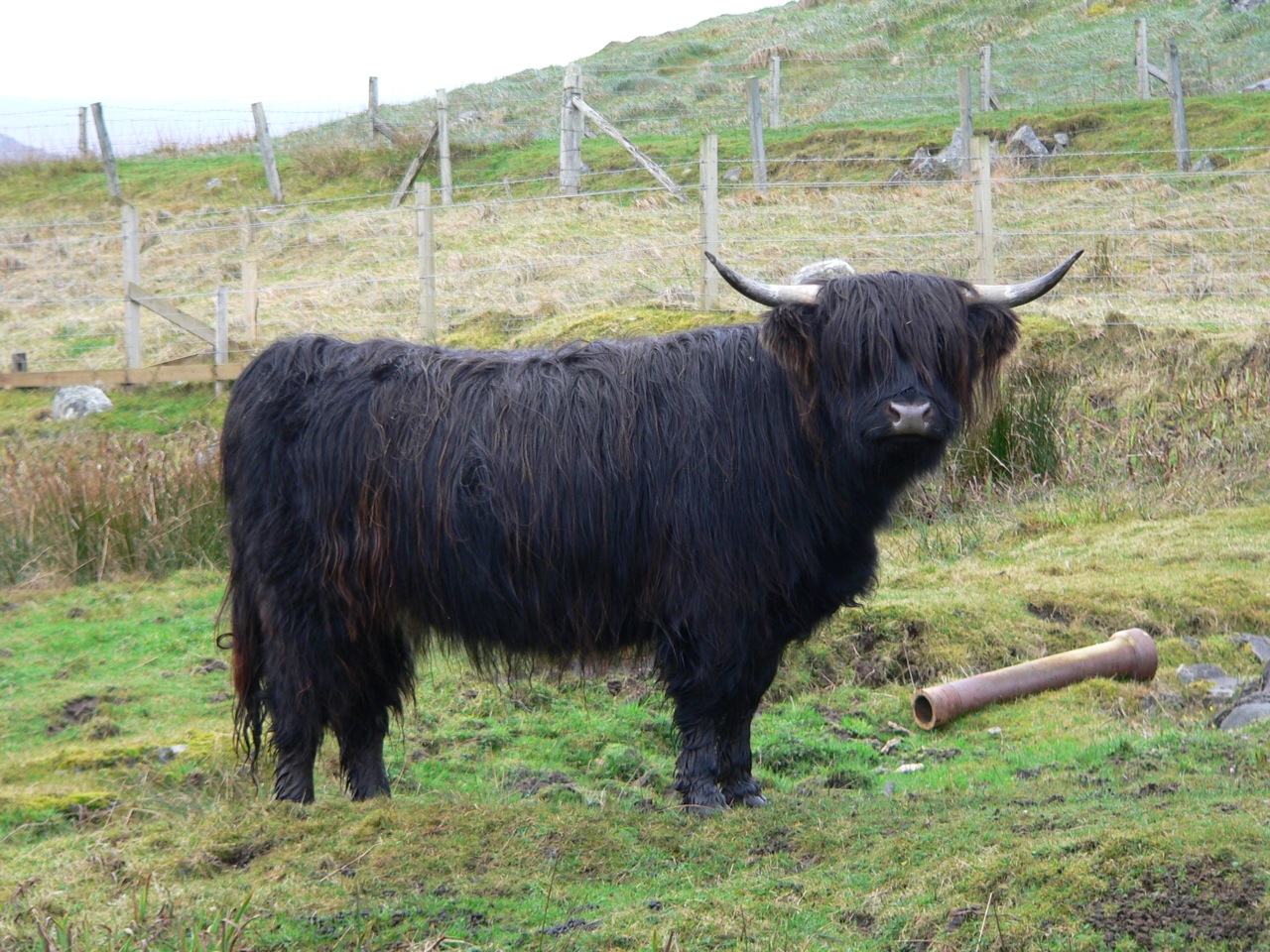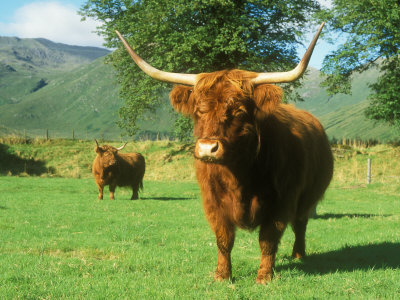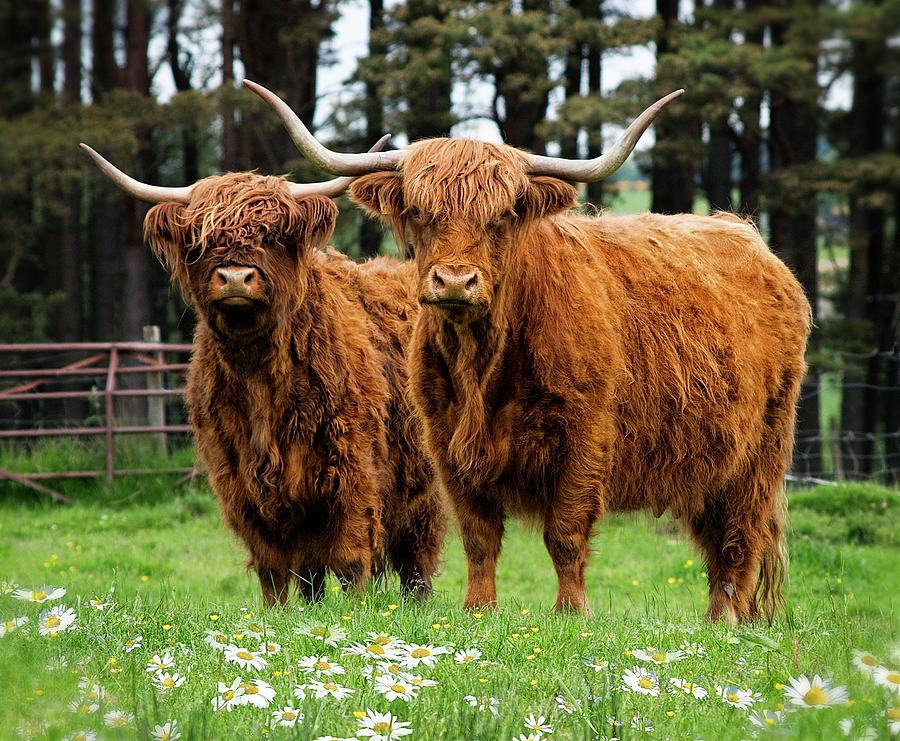

They also produce a large amount of milk for feeding. This breed’s females are more protective over the young and will be very devoted to their family. That means they keep their breed alive and well with ease. They also tend to be big breeders that can be aggressive during this process. Bulls typically spend more time with their family than other breeds.

When the calf starts to grow, the bull takes it out to train it to find its own food. They feed and then bring back food for the mother. While the mother is taking care of their calf, the Scottish Highland bulls will typically be away and spend time using their horns to get some brush to eat. With that in mind, when the female cattle give birth to a calf, here are what you’ll expect from each of the parents: Highland Bull They will also immediately know where their mother is. Their calves are also able to stand and walk as soon as they are born. This makes birthing a lot easier on the mother’s body and negates the need for any assistance in most cases. That’s because baby calves tend to be smaller than you would expect. The female cattle can give birth each year, and often birth until their 19th year. How Are Scottish Highlander Cattle as Parents? It’s the least painful and stressful to the cattle. You do this before the horn is even present. Disbudding involves removing the horn-producing area. If you choose to raise them without horns to make it easier to slaughter in a facility, rather than dehorning them, it’s best practice to take action when they are very young. If you are showing the cattle, their horns must remain. There is nothing you have to do with the horns. Though they are an animal with horns, they tend to be very easy to work with. The cattle are very smart animals and can actually be trained in many ways that other breeds do not have the capacity for. Another very gentle breed to raise are Brown Swiss cattle. This makes them easy to breed, raise, and train without much trouble. The Scottish Highland breed of cattle is docile and does not get stressed easily. Otherwise, they are friendly creatures that will allow you to get close to them. If either the bull or cow feels like you will hurt or harm their calf, they can become aggressive to protect them. The one exception to this is when they feel that their young are in danger. Most of the time, they are very sweet to everyone they meet. However, this can be a very endearing quality that people like. They may also fight a bit for your attention. They are well-behaved, but they also like to have attention and will tend to follow you when you’re there. Such a personality makes them a great addition to those who already have other farm animals on their property. This breed of cattle tends to be very friendly with people making them among the best farm animals to raise. This breed of cattle also has a great personality, especially in terms of friendliness and docility. This feature, though, is mainly for protecting their eyes from cancer and other illnesses such as IBK (infectious bovine kerato-conjunctivitis or pinkeye). These animals also have longer eyelashes and forelocks, giving them an endearing quality when you see them up close. However, the most common ones are those with a darker reddish-brown color. You can find some with yellow, silver, white, black, or reddish-brown fur. Due to crossbreeding, we now see many different fur colors among Scottish High bulls and cows. Older versions of this breed were found with black fur or have a reddish tint to their skin. This is why they are sometimes also called The Hairy Cow. This often looks like it is styled to grow over their eyes. Some of their most outstanding features include: Head Hairīoth the bulls and cows are known for having hair at the top of their head. As one of the oldest cattle breeds recorded, they have had a long history of crossbreeding and changes throughout their lifespan. With their long hair, many people find Highland Scottish cattle appearance to be adorable.

Meaning if cross breeding continues, we might see an even more diverse population of cattle in the future. It will bring the benefits of the Scottish Highlander cattle’s evolution and allow others to share the same benefits as they crossbreed.Īnother is diversity. This can make other cattle breeds stronger over time and allow their females to give birth easier. This is passed to whatever breed they are crossbred with, which makes them more resistant to diseases. They have evolved to deal with tougher conditions and to fight off sickness. The genetic makeup of the Scottish Highland breed is tough and has become even stronger over time. One of these is that other breeds now have the genetic makeup of this breed of cattle. There have been some benefits that have come from crossbreeding with this strong breed of cattle.


 0 kommentar(er)
0 kommentar(er)
